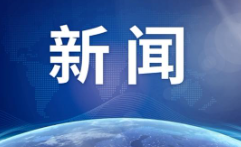西方造謠中國毀穆斯林墳?zāi)?CGTN記者實證回懟(2)
圖爾遜的父母之前也埋葬在當(dāng)?shù)氐耐疗律?,墳地周圍雜草叢生,垃圾漫天,。每當(dāng)夏天來臨時,,吐爾遜常常擔(dān)心父母的墳?zāi)闺S時可能會被沖掉,他怕未來有一天會找不到父母的墓地,,和父母說說話聊聊天,。
墓地問題在阿克蘇地區(qū)變得日益嚴(yán)峻。維吾爾穆斯林對于土葬有特定的習(xí)俗和流程,,也給了當(dāng)?shù)貧浽釓臉I(yè)者壟斷和操縱價格的機會,。
He‘s not alone in the village of Yakruyk, in Uqturpan – a county under southern Xinjiang’s Aksu Prefecture and only 70 kilometers from China‘s border with Kyrgyzstan,。
Numerous grave mounds pile in heaps across the small slope,, exposed to the scathing sun, floodwaters,, and arid winds from the Taklamakan and overgrown ruderals,。 In addition, Uygurs,, especially those who were living in impoverished rural areas,, didn‘t have the custom of erecting tombstones。 Instead,, they would stick a small branch on top of a mound to mark it,。 Over time, these branches would go missing,, and they wouldn’t be able to locate the graves of their relatives,。

讓思念更長久:維吾爾族的墳?zāi)棺冞w
在當(dāng)?shù)孛癖姷恼埱笙?,?dāng)?shù)孛裾謴?005年開始規(guī)劃建設(shè)生態(tài)公墓,2016年已經(jīng)建成大部分,,其中大多數(shù)新公墓就坐落在老墓地旁邊,,方便村民遷移。而老墓地則改造為可耕種土地,,種上了當(dāng)?shù)靥禺a(chǎn)核桃,,小麥以及防風(fēng)固沙的楊樹,這些農(nóng)產(chǎn)品除了幫助貧困家庭增收以外,,還可以用于維護(hù)墓地環(huán)境,。
圖爾遜把父母的墳?zāi)拱岬嚼夏沟嘏赃呅陆ǖ纳鷳B(tài)公墓以后,一切都變得更方便了,。他現(xiàn)在每周都會來一次陪逝去的父母說說話,,給花澆澆水,打掃一下周圍的衛(wèi)生,。
下圖為2015年亞克瑞克村的衛(wèi)星圖像,,這里的土墳旁邊的土地在四年后變成了新的生態(tài)公墓。

2019年底,,如下圖所示,,阿克蘇地區(qū)已建成800多座公益生態(tài)公墓。

亞克瑞克村的一位村村干部買合木提·努爾帶CGTN記者參觀了村里的一個新生態(tài)公墓,,這里有95個新墓穴,,上面都豎有墓碑,方便村民們在墓碑上供奉鮮花和水果,,紀(jì)念已故的親人,。
相關(guān)新聞
大馬總理:美刺殺行動違反國際法 或升級恐怖主義
馬來西亞總理馬哈蒂爾1月7日表示,,美國刺殺伊朗高級軍事指揮官蘇萊曼尼是不道德的,所有穆斯林國家應(yīng)團(tuán)結(jié)起來保護(hù)自己免受外部威脅,。
環(huán)球時報:美方談判前的行動套路,中方已很熟悉
在中美新一輪經(jīng)貿(mào)高級別磋商舉行的前夕,,美國商務(wù)部于北京時間8日宣布將28家中國機構(gòu)和企業(yè)列入實體清單,,理由是它們“涉嫌打壓新疆的穆斯林”

























